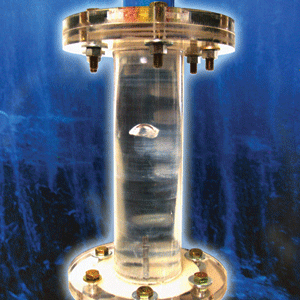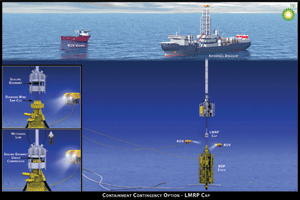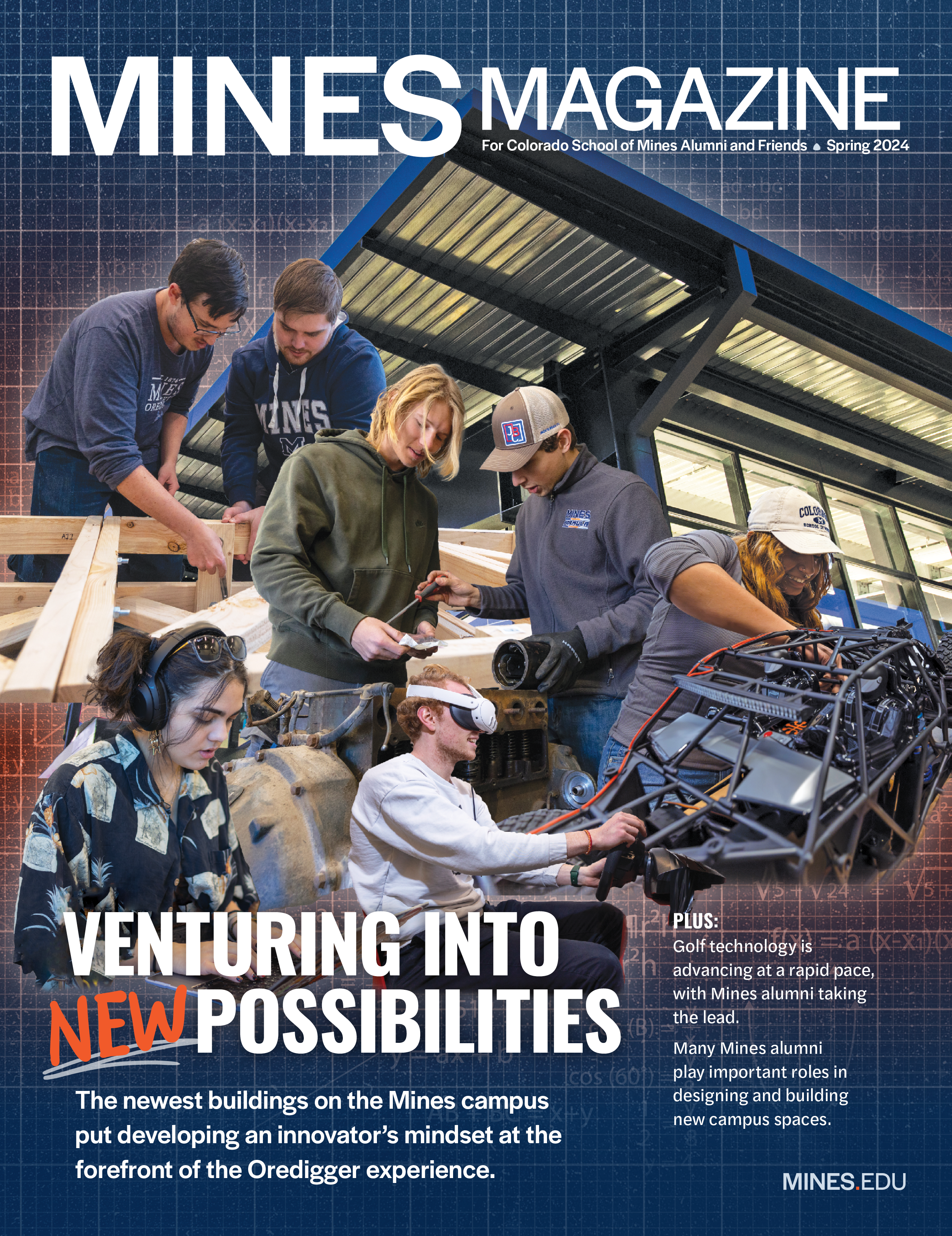
A precisely modulated downward current in CSM’s DOGWB simulator prototype keeps a gas bubble stationary.
Almost immediately after the April 20, 2010, rupture at BP’s Deepwater Horizon oil rig, scientists and engineers began asking questions about why it happened and how to respond more effectively should it happen again. Of the many research projects launched to answer these questions, there’s one moving ahead through the Colorado School of Mines Hydrate Center that could shed light on processes never before observed.
The Center for Hydrate Research received funding through two NSF RAPID grants to produce the Deepwater Oil and Gas Well Blowout Simulator. A laboratory-scale apparatus with visual and electronic monitoring capabilities, the DOGWB simulator will offer improved risk-assessment of hydrate formation in deepwater gas/oil blowout scenarios, enabling engineers to design better containment systems and more effective crisis-response protocols.
“The simulator was designed in direct response to what happened in the Gulf of Mexico,” says Amadeu Sum, a co-director of the Center for Hydrate Research. “It’s going to provide information that’s not currently available to help us understand what happened and how we can prevent it from happening again.”
The device will yield new insight about the formation of hydrates’ crystalline structures consisting of water and natural gas molecules that readily form under low temperature and high pressure, the conditions found in deepwater blowouts, and elsewhere. In fact, hydrate formation is a menace in many oil and gas operations, where cold, pressurized pipelines are often used to transport both oil and gas.
Hydrate formation foiled BP’s initial effort to contain the Deepwater Horizon blowout. “The first containment device BP deployed was a 100-ton dome structure,” explains Carolyn Koh, co-director of the Hydrate Center. “But the dome trapped a mixture of water, gas and oil, all the ingredients you need for the formation of gas hydrates. Gas hydrate crystals did form, and they caused a blockage in the containment structure, leading to the failure of the dome.”
Offshore operations sometimes keep pipelines clear of hydrates by injecting methanol, which inhibits their formation. A more targeted approach became possible after the Hydrate Center developed a computer-modeling tool, CSMGem, which enables pipeline operators to locate points in a pipeline where temperature and pressure conditions exist that make hydrate formation likely. Injecting inhibitors for those locations can be an economical solution. However, such an approach isn’t always effective or economical in deepwater conditions, where hydrates can occur very readily.

Illustrations of containment and response in the Macondo well.
�”At greater depth, the amount of methanol that’s required can be up to 60 percent of the overall flow volume,” Koh says. “That’s not viable economically or environmentally, so we need another approach.”
To find one, more research into the basic physics and chemistry of hydrate formation in open deepwater environments is required, which will be facilitated by the DOGWB simulator. It will mix water, gas and oil under high pressure in a vertical tunnel with a downward flow of seawater.
By matching the downward flow to the upward buoyancy of the gas bubble or oil droplet, the gas bubble (or oil droplet) will remain stationary, giving researchers the opportunity to closely observe hydrate formation around it and experiment with various interventions.
“We need to examine not only how you prevent hydrates from forming, but also how you manage the ones that do form in a blowout scenario,” Koh explains. “We need to be better equipped to respond.”
In addition to providing valuable information on hydrate formation, DOGWB will also be used to better understand the impact of hydrates on the dispersion of oil emitted in a deepwater blowout, helping response crews better anticipate the movement of oil in the event of a future spill. It may also yield useful insights into the management of natural hydrate deposits, found in permafrost, the ocean floor and other extreme, low-temperature environments. If all goes according to plan, the DOGWB prototype will be operational by the spring of 2011.
Larry Borowsky




